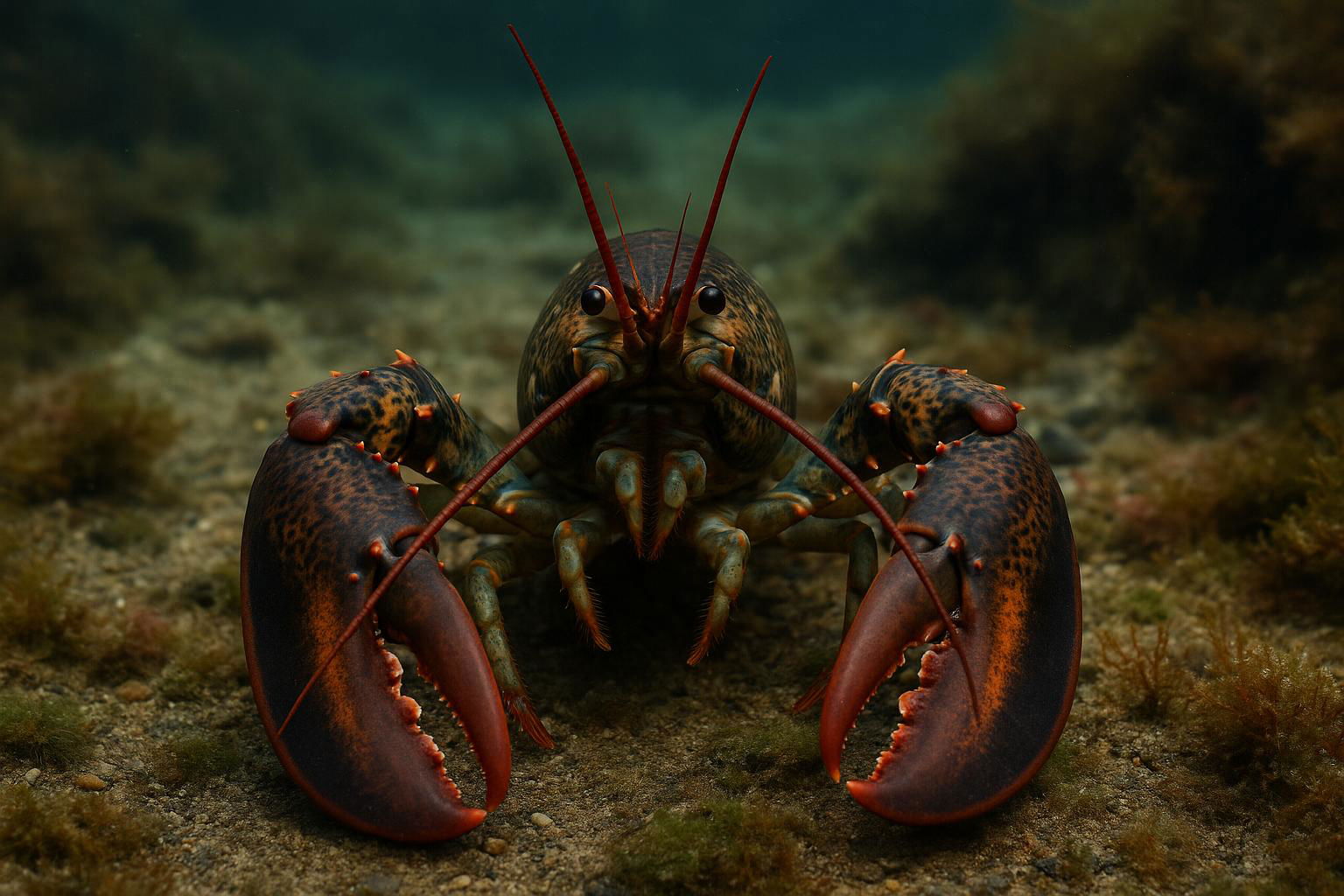
American Lobster
Homarus americanus
The American Lobster, scientifically known as *Homarus americanus*, is a crustacean native to the northwestern Atlantic Ocean, predominantly found from Newfoundland and Labrador to North Carolina. This iconic marine species is renowned for its large, robust body and distinctive claws, which are asymmetrical, with one developed as a crusher and the other as a cutter. Their body coloration typically ranges from greenish-brown to blue and can occasionally exhibit rare color variations like yellow or albino. Adult American Lobsters can reach weights of over 40 pounds and lengths up to 25 inches, though individuals of these sizes are uncommon. They thrive on the ocean floor in rocky, cold-water environments where they seek shelter during the day and emerge at night to hunt for a variety of prey, from mollusks to fish. American Lobsters play a crucial role in marine ecosystems as both predators and prey, and they are also a significant source of economic value, being one of the most commercially harvested lobsters in the world. Their lifecycle includes a fascinating molting process, which is essential for growth and reproduction.
Colors: Greenish-Brown, Blue (rare genetic variant)
 All Species & Breeds
All Species & Breeds
 Highland Cattle
Highland Cattle
 Miniature Donkeys
Miniature Donkeys
 All Species Directory
All Species Directory
 Highland Cattle in Virginia
Highland Cattle in Virginia
 Miniature Donkeys in Texas
Miniature Donkeys in Texas












